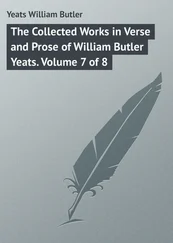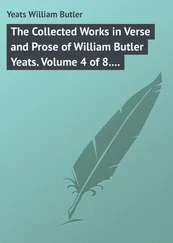William Wynn Westcott - The Collected Works
Здесь есть возможность читать онлайн «William Wynn Westcott - The Collected Works» — ознакомительный отрывок электронной книги совершенно бесплатно, а после прочтения отрывка купить полную версию. В некоторых случаях можно слушать аудио, скачать через торрент в формате fb2 и присутствует краткое содержание. Жанр: unrecognised, на английском языке. Описание произведения, (предисловие) а так же отзывы посетителей доступны на портале библиотеки ЛибКат.
- Название:The Collected Works
- Автор:
- Жанр:
- Год:неизвестен
- ISBN:нет данных
- Рейтинг книги:4 / 5. Голосов: 1
-
Избранное:Добавить в избранное
- Отзывы:
-
Ваша оценка:
- 80
- 1
- 2
- 3
- 4
- 5
The Collected Works: краткое содержание, описание и аннотация
Предлагаем к чтению аннотацию, описание, краткое содержание или предисловие (зависит от того, что написал сам автор книги «The Collected Works»). Если вы не нашли необходимую информацию о книге — напишите в комментариях, мы постараемся отыскать её.
Contents:
Hermetic Arcanum
The Divine Pymander
The Hermetic Art
Aesch Mezareph
Somnium Scipionis
The Chaldaean Oracles
Euphrates
Egyptian Magic
Sepher Yetzirah
Numbers
The Magical Ritual of the Sanctum Regnum
Suicide
The Isiac Tablet of Cardinal Bembo
The Collected Works — читать онлайн ознакомительный отрывок
Ниже представлен текст книги, разбитый по страницам. Система сохранения места последней прочитанной страницы, позволяет с удобством читать онлайн бесплатно книгу «The Collected Works», без необходимости каждый раз заново искать на чём Вы остановились. Поставьте закладку, и сможете в любой момент перейти на страницу, на которой закончили чтение.
Интервал:
Закладка:
103. The four grades of Heat are called the heat of the Water Bath, the heat of Ashes, of Coals, and of Flame, which is also called "Optetic:" every grade hath its degrees, two at least, sometimes three; for heat is to be moved slowly and by degrees, whether it be increased or decreased; so that Matter, after Nature's example, may go on by degrees and willingly unto formation and completion; for nothing is so strange to Nature as that which is violent. Let the Philosopher propound for his consideration the gentle access and recess of the Sun, whose Light and Lamp bestoweth its heat to the things of the world, according to the times and Laws of the Universe, and so bcstoweth a certain temperament upon them.
104. The first degree of the Bath of Heat is called the heat of a Fever; the second, of Dung. The first degree of the second grade is the simple heat of Ashes, the second is the heat of Sand. Now the degrees of Fire, Coals and Flame want a proper Name, but they are distinguished by the operation of the intellect, according to their intensity.
105. Three Grades only of Fire are sometimes found amongst Philosophers, viz., the Water Bath, of Ashes and of Flame: which latter comprehendeth the Fire of Coals and of Flame: the Heat of Dung is sometimes distinguished from the Heat of the Bath in degree. Thus for the most part Authors do involve the light in darkness, by the various expressions of the Philosophers' Fire; for the knowledge thereof is accounted amongst their chief secrets.
106. In the White Work, because three Elements only are extracted, Three degrees of Fire do suffice; the last, to wit the "Optetic," is reserved for the Fourth Element, which finisheth the Red Work. By the first degree the eclipse of Sol and Luna is made; by the second the light of Luna begins to be restored; by the third Luna attaineth unto the fulness of her splendour; and by the fourth Sol is exalted into the highest apex of his glory. Now in every part the Fire is administered according to the rules of Geometry; so that the Agent may answer to the disposition of the Patient, and their strength be equally poised betwixt themselves.
107. Philosophers have very much insisted upon secrecy in regard to their Fire; they scarce have been bold to describe it but shew it rather by a description of its qualities and properties, than by its name: as that it is called Airy Fire, Vaporous, Humid and Dry, Clear or Star-like; because it may easily by degrees be increased or remitted as the Artificer pleaseth. He that desireth more of the knowledge of Fire may be satisfied by the Works of Lullius, who hath opened the Secrets of Practice to worthy minds candidly.
108. Of the conflict of the Eagle and the Lion also they write diversely, because the Lion is the strongest animal, and therefore it is necessary that more Eagles act together (three at least, or more, even to ten) to conquer him: the fewer they are, the greater the contention, and the slower the Victory; but the more Eagles, the shorter the Battle, and the plundering of the Lion will more readily follow. The happier number of seven Eagles may be taken out of Lullius, or of nine out of Senior.
109. The Vessel wherein Philosophers decoct their work is twofold; the one of Nature, the other of Art; the Vessel of Nature which is also called the Vessel of Philosophy is the Earth of the Stone, or the Female or Matrix, whereinto the sperm of the Male is received putrefies, and is prepared for generation; the Vessel of Nature is of three sorts, for the secret is decocted in a threefold Vessel.
110. The First Vessel is made of a transparent Stone, or of a stony Glass, the form thereof some Philosophers have hid by a certain Enigmatic description; sometimes affirming that it is compounded of two pieces, to wit, an Alembic and a Bolt-head; sometimes of three at other times of the two former with the addition of a Cover.
111. Many have feigned the multiply of such like Vessels to be necessary to the Philosophical Work, calling them by divers names with a desire of hiding the secret by a diversity of operations; for they called it Dissolvent of solutions; Putrefactory for putrefaction; Distillatory for distillation; Sublimatory for sublimation; Calcinatory for calcination &c.
112. But all deceit being removed we may speak sincerely, one only Vessel of Art sufficeth to terminate the Work of either Sulphur; and another for the Work of the Elixir; for the diversity of digestions requireth not the change of Vessels; yea we must have a care lest the Vessel be changed or opened before the First work be ended.
113. You shall choose a form of glass Vessel round in the bottom (or cucurbit), or at least oval, the neck a hand's breadth long or more, large enough with a straight mouth made like a Pitcher or Jug, continuous and unbroken and equally thick in every part, that it may resist a long, and sometimes an acute Fire The cucurbit is called a Blind-head because its eye is blinded with the Hermetic seal, lest anything from without should enter in, or the Spirit steal out.
114. The second Vessel of Art may be of Wood, of the trunk of an Oak, cut into two hollow Hemispheres, wherein the Philosophers' Egg may be cherished till it be hatched; of which see the Fountain of Trevisan.
115. The third Vessel Practitioners have called their Furnace, which keeps the other Vessels with the matter and the whole work: this also Philosophers have endeavoured to hide amongst their secrets.
116. The Furnace which is the Keeper of Secrets, is called Athanor, from the immortal Fire, which it always preserveth; for although it afford unto the Work continual Fire, yet sometimes unequally, which reason requireth to be administered more or less according to the quantity of matter, and the capacity of the Furnace.
117. The matter of the Furnace is made of Brick, or of daubed Earth, or of Potter's clay well beaten and prepared with horse dung, mixed with hair, so that it may cohere the firmer, and may not be cracked by long heating; let the walls be three or four fingers thick, to the end that the furnace may be the better able to keep in the heat and withstand it.
118. Let the form of the Furnace be round, the inward altitude of two feet or thereabouts, in the midst whereof an Iron or Brazen plate must be set, of a round Figure, about the thickness of a Penknife's back, in a manner possessing the interior latitude of the Furnace, but a little narrower than it, lest it touch the walls; it must lean upon three or four props of Iron fixed to the walls, and let it be full of holes, that the heat may be the more easily carried upwards by them, and between the sides of the Furnace and the Plate. Below the Plate let there be a little door left, and another above in the walls of the Furnace, that by the Lower the Fire may be put in, and by the higher the temperament of the heat may be sensibly perceived; at the opposite part whereof let there be a little window of the Figure of a Rhomboid fortified with glass, that the light over against it may shew the colours to the eye. Upon the middle of the aforesaid plate, let the Tripod of secrets be placed with a double Vessel. Lastly, let the Furnace be very well covered with a shell or covering agreeable unto it, and take care that the little doors be always closely shut, lest the heat escape.
119. Thus thou hast all things necessary to the First Work, the end whereof is the generation of two sorts of Sulphur; the composition and perfection of both may be thus finished.
The Practice of the Sulphur
Table of Contents
Take a Red Dragon, courageous, warlike, to whom no natural strength is wanting; and afterwards seven or nine noble Eagles (Virgins), whose eyes will not wax dull by the rays of the Sun: cast the Birds with the Beast into a clear Prison and strongly shut them up; under this let a Bath be placed, that they may be incensed to fight by the warmth, in a short time they will enter into a long and harsh contention, until at length about the 45th day or the 50th the Eagles begin to prey upon and tear the beast to pieces, which dying will infect the whole Prison with its black and direful poison, whereby the Eagles being wounded, they will also be constrained to give up the ghost. From the putrefaction of the dead Carcasses a Crow will be generated, which by little and little will put forth its head, and the Heat being somewhat increased it will forthwith stretch forth its wings and begin to fly; but seeking chinks from the Winds and Clouds, it will long hover about; take heed that it find not any chinks. At length being made white by a gentle and long Rain, and with the dew of Heaven it will be changed into a White Swan, but the new born Crow is a sign of the departed Dragon. In making the Crow White, extract the Elements, and distil them according to the order prescribed, until they be fixed in their Earth, and end in Snow-like and most subtle dust, which being finished thou shalt enjoy thy first desire, the White Work.
Читать дальшеИнтервал:
Закладка:
Похожие книги на «The Collected Works»
Представляем Вашему вниманию похожие книги на «The Collected Works» списком для выбора. Мы отобрали схожую по названию и смыслу литературу в надежде предоставить читателям больше вариантов отыскать новые, интересные, ещё непрочитанные произведения.
Обсуждение, отзывы о книге «The Collected Works» и просто собственные мнения читателей. Оставьте ваши комментарии, напишите, что Вы думаете о произведении, его смысле или главных героях. Укажите что конкретно понравилось, а что нет, и почему Вы так считаете.












